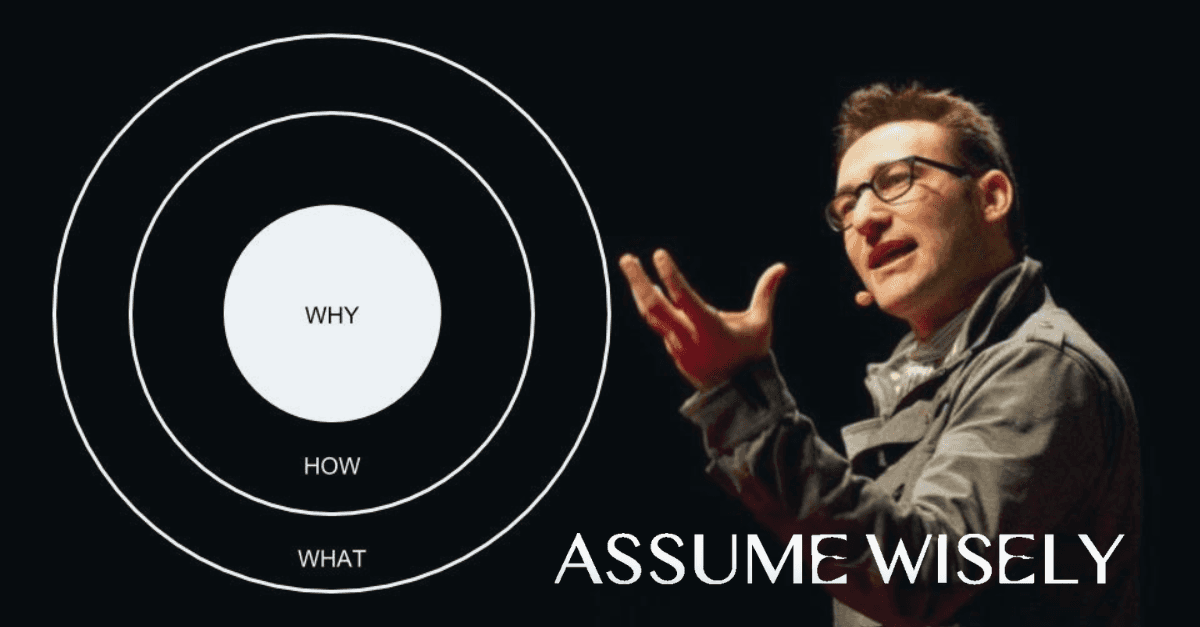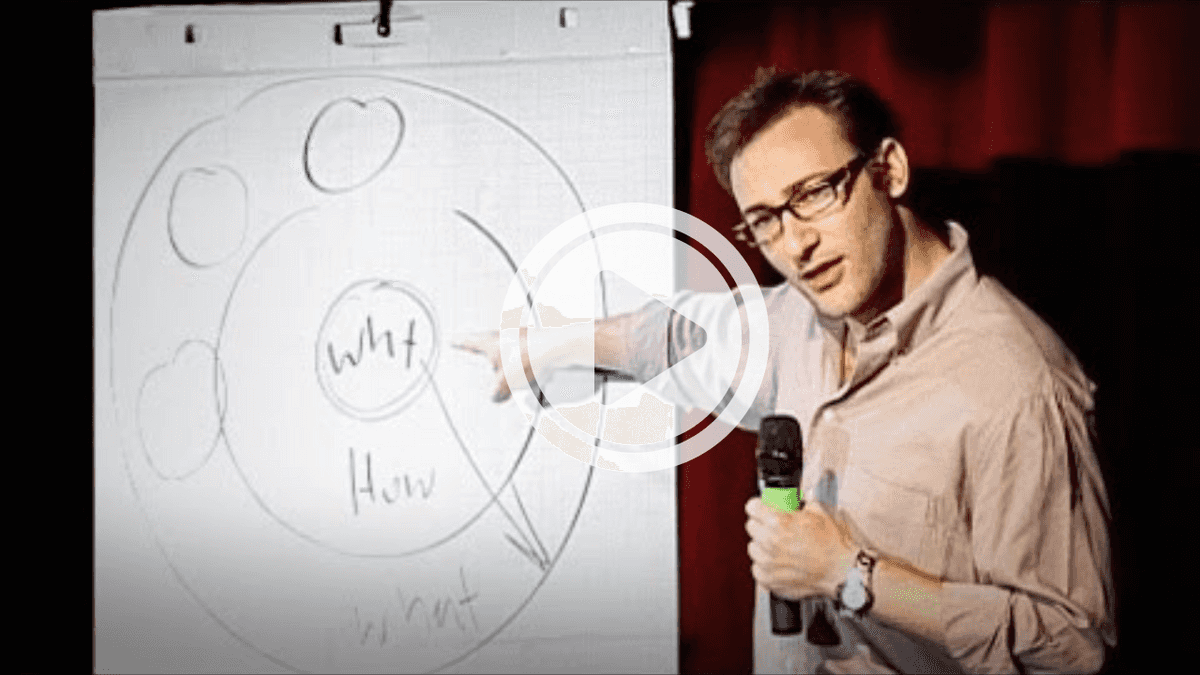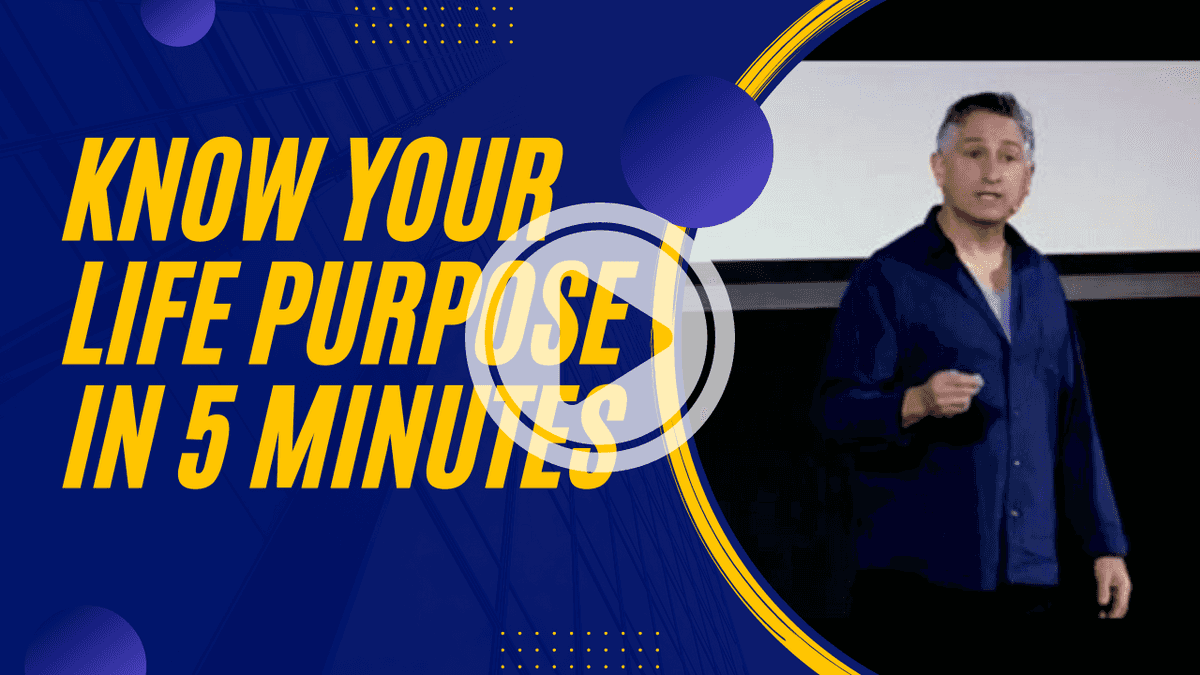
How Great Leaders Inspire Action
Posted: July 1, 2017
Often I get a question that reveals a fundamental mistake we all make every day. This is my answer.
It gets asked a lot. Well, maybe?
Maybe, it's just that to a hammer everything is a nail. This is my hammer.
You might be leading a team, crafting the bullet points on your resume, making a recommendation on Facebook. What do you say to persuade others to take action?
What do you say?
Jamie Dimon puts it like this, "Leadership is relentless storytelling. We all forget. We all need to be reminded of our purpose."
So, what's your story?
The Mistake That Is Costing You
See if you catch yourself doing this the next time you have to write a performance evaluation. Do you focus on what you did? Take a look at your resume. What is the focus? Is it on what you did? Think of the last good movie you saw or book you read. What can you tell me about it?
Are you tempted to give away the plot? You (and just about everyone else) is focused too much on the what.
You need to start with Why. Simon Sinek wrote a whole book on why. But you can get away with just watching the TED talk.
Anyone (and everyone) can tell you what they do.
Some can talk about how. This is 90% of what marketers will focus on: differentiating value proposition, proprietary process, secret sauce, or USP (unique selling proposition).
Very few people will talk about Why, Purpose, Cause, Belief. Why do you get out of bed in the morning? Why should anyone care? People don't buy what you do they buy why you do it. And the what serves as the proof of what you believe.
The goal is to do business with people who believe what you believe. It is not making money; that is a result. Start with Why, then follow it up with How and What.
How to Start with Why
I bought Start With Why hoping to learn how to start with Why. It's a good read. I've read and re-read it. The book comes up short at the end where Sinek up sells a $100 course to help you find your why. I opted to figure it out on my own. It took a little over a year to nail down a repeatable process. But it was free! If you are interested in learning how I did it, keep reading.
Articulating your Why is difficult. It's innately fuzzy. Your goal is to bring it into sharp focus. That might take some time. Just keep coming back to it.
My first attempts were heavily influenced by the Strengths Finder 2.0 Assessment. I highly recommend this assessment. It's free when you purchase the book, Strengths Finder 2.0. This is a great tool if you are looking for an objective measure of your innate strengths. Here is the catch, even as I explored my strengths I knew that strengths are not the same as purpose. This answers the question How, not Why. That is valuable, just not the final stop. Your strengths set you apart from the crowd, they are your USP, your secret sauce. So the exercise is worth taking the time to do.
It's ironic that the question Simon Sinek leaves unanswered in his TED talk is answered by another TED talk: How to know your life purpose in 5 minutes by Adam Leipzig.
I'm sure you have heard of the idea of an elevator pitch. Adam goes through a series of questions so you can articulate yours in under five minutes: your own elevator pitch that starts with why. You can check out mine on my LinkedIn Profile. Or my Instagram Bio. Even the intro of my Facebook page.
But that is not going to be enough. It isn't going to weather the storm. And the storms will come. Believe that.
What's It All For?
What's it all for? Tour bus, studio, and the fans,
What's it all for? Chicks and whips with twenty inch rims,
What's it all for? To feed my family and my friends,
What's it all for? To change your world the best I can.
What's It All For, Bazaar Royal
The final piece came after I read Mark Manson's The Subtle Art of Not Giving A F*ck. I think he is a terrific writer. He utilizes a strong voice (and language, consider yourself warned).
I could not have come across his book at a better time, it was actually one of the most awful times in my life. I was suffering from shouldy values. One in particular, which I'll call "big house nice car." The house wasn't even that big, just bigger than mine. The car wasn't that nice, just nice to have. And somehow this justification made it less shallow. Have you ever heard someone say,
"When I'm done with school . . . "
"When I get that internship . . . "
"When I graduate . . . "
"When I get a job . . . "
"When I get a better paying job that is actually in my field . . . "
"Once I make X per year . . .
. . . then I'll be happy / set / successful."
Have you ever heard those words? Was it you saying them? It was definitely me. These are dangerous words. They are a symptom of shouldy values.
The cure for shouldy values is to be mindful of great values. Your great values. Where I sit, people outsource this type of thinking to religion. Don't. For sure this is a great pool to draw from but, do your own homework. It's actually a fun exercise.
The Cure For Shouldy Values
You are going to fill out a bracket for your values. Think March Madness, but with values.
I've started you off with a pretty good list of values. Go through this list or feel free to google "list of values" yourself. Write down the ones that resonate with you on a post-it notes. One per note. Don't hold back, if a word catches your eye, write it on a post-it.
Don't skip this next step because if you do you will need to start over. You should have a pile of post-it notes now. Divide these post-its into categories: Personal Attributes, Activities, Relationships, Things, Skills. It's easiest to do this with Post-It notes. You might value certain categories more than others. It will become clear why this matters in the last step.
Finally you are going to fill your bracket. Hold a tournament (think March Madness) for each category. Each value is going to compete against another value. Consider a pair of Post-It notes. If you can only have one, which do you choose to keep? The keeper advances to the next round. Do this until you have a clear winner for each category.
The categories are important because you might value one category over another. I found this was the case with me. Knowledge is one of my top values, but it is a thing and of all the categories I value things the least. Knowledge ended up getting killed by values in other categories. I saw it dropping down the ranks and knew something needed to change.
Which, brings me to the final step. The bracket is designed to spur your own intuition. It's not designed to be an objective measure. This isn't Highlander, there can be more than one. I actually created a top ten list for each category. You might even need different categories, if you do I'd like to know about it. Really. Tell me. Please.
Tell Me Your Story.
Jamie Dimon once said, "Leadership is relentless storytelling. We all forget. We all need to be reminded of our purpose. So,
Tell me your story.
Now that you have done all of this work,
what story is yours to tell?
It's a story about you, your tribe, and what you do for them.
It starts with what you believe, what you value. But it can't just be about you. Your story is about what you do to help your tribe to reach their ideal, achieve their goals, or overcome their trials. You need to be really clear about who you are, what you believe and how you stand out. You need to be clear so you can clearly communicate to your tribe. How else will they know? If they share your values then your Why will resonate with them. This is your contribution, what you do to serve them.

